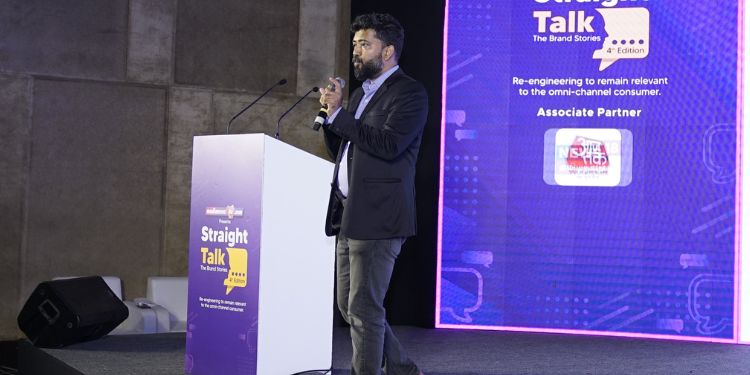Speaking on ‘Seven content provocations in the omni-channel age’ at the fourth edition of MediaNews4u.com Straight Talk in Chennai on 18 November 2022, Karthik Nagarajan, Chief Content Officer, Wavemaker and Head of Branded Content, GroupM, underlined the fundamental shift in the path to consumer experience.
Gone is the era when the product created the experience, which created the reputation, which in turn creates the brand, he contended.
“The big shift, which has been accelerated in the last five or six years, is that the product, the audience and the occasion together create the experience. The experience then creates the reputation. But the reputation keeps creating the brand over and over again,” explained Nagaraj, delivering a theme presentation at the seminar.
There are multiple injection points for the same idea today, noted the speaker, citing the case of TV commercials by Tide mimicking other famous Superbowl commercials and sparking off conversations.
“The experience that we are creating in one medium permeates across,” noted Nagaraj, also showcasing work by Wavemaker India around Cadbury’s association with the Mumbai Indians IPL team.
As part of the campaign, for every run scored by the team, Cadbury Dairy Milk provided health insurance to two daily wage workers, adding up to over 5,500 policies. Besides which, sales of specially packaged ‘Thank You’ chocolate bars was used to fund health insurance for over 25,000 domestic workers.
Advocacy is in
“Social media used to be the fulcrum where all the content congregates. Until 2014 or 2015, all the brands were spending on increasing their social media following. There was an inherent belief that they were building a community there through brand handles. Something has changed in the last three to four years. Today social media is not the hub of all content for a brand. Advocacy is – influencers and creators are,” said Nagaraj, pointing to another drastic shift in the content space.
Engagement on content posted on brand handles, even if it is content featuring celebrities, is not as strong as content posted by influencers or creators, underlined the speaker, with examples.
“The question then is, what is the future of brand handles on social media? Do we need to build them? Do we need to spend money on it and create content calendars for it? Or, are creators and influencers our communication points and platforms on social media? It’s something for us to think about. The numbers certainly say that things are going the influencer way,” said the content head.
No one is as interested in following a brand as they are in following a creator, he added.
Citing the example of Olx Autos’ campaign featuring director Rohit Shetty and actor Sharman Joshi, Nagaraj noted that a piece of influencer content can start at one point and straddle the spectrum. Influencers also help in reaching media dark areas for categories like alcohol, explained the speaker.
“There are a lot of other areas where we are bringing in cultural relevance,” said Nagaraj, with the example of content created by music composer Illayaraaja for Netflix (Stranger Things), to help drive home the point that there is a lot of regional content on the OTT platform.
To call the composer an influencer would seem blasphemous to many, noted the speaker, adding that when the brief was to appeal to generations, they thought of Illayaraaja whose music has influenced several generations. The intent was to go beyond the core audience already watching the show and it worked, said Nagaraj.
While the decision to rope in Illayaraaja was based on instinct, 90 percent of influencers are chosen basis data points, revealed the speaker. To be precise, over 100 data points go into that decision.
“Behind every content or influencer decision at GroupM, there are at least 100 data variables at play. It is not just about location and demographics, it is also about brand safety. Today the choice of an influencer also depends on how genuine their following is. We made some wise decisions by taking the data-first approach to influencers,” he explained.
There is also a shift from commerce on influencer platforms to influencers on commerce platforms, according to Nagaraj.
He cited the case of Nothing, which leveraged influencers to sell out its phones online in quick time on Flipkart.
Exclusive influencer content created for loyalty members on Myntra, which features shoppable products, has seen 50 percent of the merchandise being wishlisted, he revealed.
A celebrity influencer marketing campaign for an oral care brand generated views but had an engagement rate of 0.2 percent, while a community marketing campaign (sent to interest groups) had 42 percent engagement from comments.
Another example that drove home the point that the needle is indeed moving towards influencers and communities.
“The way to go for brands is certainly to build these communities or be part of these communities on social platforms,” surmised Nagaraj.

















